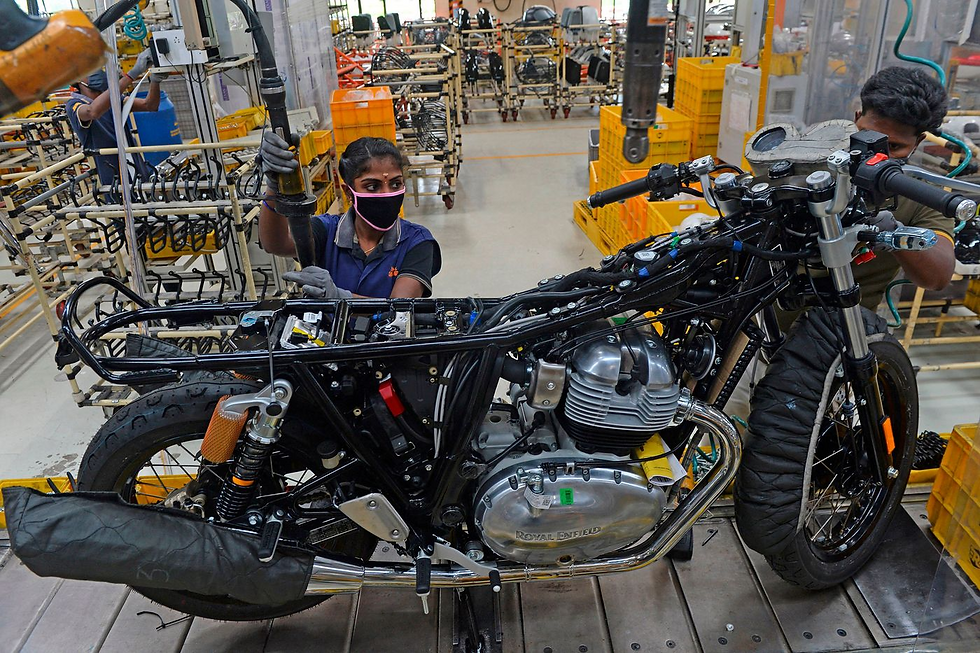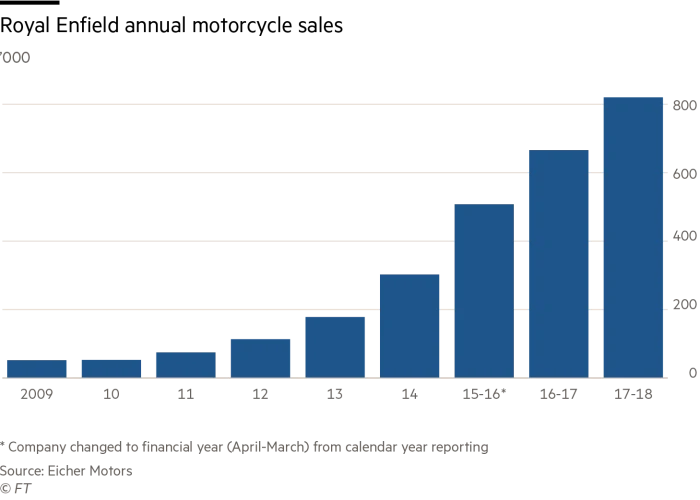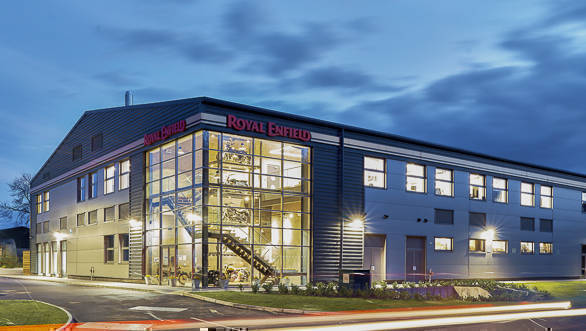How Eicher's Siddhartha Turned Around Royal Enfield
- Rohan Nidmarti
- Sep 3, 2021
- 4 min read
The thump of a Royal Enfield Bullet is often deemed as the Indian roads' surreal anthem. It is a motorcycle redolent with nostalgia and built on roots spread between England and India. Ask a man on the street about his wicked automobile dreams, and you would trigger a yearning towards riding a Bullet", an excerpt from the book, Indian Icon: The Cult Called Royal Enfield.
Royal Enfield is one of the fastest growing and biggest motorcycle brands in the world. It is a premium homegrown consumer brand for the global markets. It has strong brand recall, rich global history, a very-well defined storyline, and a top-notch team in the UK building world-class products. However, by the 1980s, the brand was considered an underachiever and basket-case. To understand how Royal Enfield became the brand it is, we need to take a look at its history.

History:
In 1892, Eadie Manufacturing Company was started by Albert Eadie and Robert Smith. The company manufactured gun components for the Royal Small Arms Factory. In 1896, a subsidiary of the Eadie Company was started: The New Enfield Cycle Company. This company produced bicycle components. The company also produced cars.
After a few years, The New Enfield Cycle Company sold its car manufacturing division and focused solely on motorcycles. The company later assumed the name of Royal Enfield. In 1914, Royal Enfield received an order from the British Arms Department, which decided to use its motorcycles in WWI. The Russian government also placed an order. This popularised Royal Enfield motorcycles globally.

In 1949, the Indian government decided to use Royal Enfield motorcycles for its army and police personnel. These motorcycles gained immense popularity in India. In 1955, Royal Enfield partnered with Madras Motors to assemble the 350cc Bullet motorcycle in Madras (now Chennai). By 1962, all components were made in India.
The Enfield England encountered huge losses and was shut down, however, Enfield India continued manufacturing motorcycles. By 1994, Enfield India was making huge losses, so it merged with Eicher Motors, a commercial-vehicles manufacturer. After incurring losses for 5 years, Eicher decided to stop the production of Royal Enfield motorcycles.
Siddhartha Lal Leadership:
Siddhartha Lal, the son of Vikram Lal (former CEO of Eicher Motors), had a great passion towards motorcycles. He decided to revive Royal Enfield. After an intense portfolio analysis, he took the bold decision of divesting 13 out of the 15 Eicher Motors subsidiary's and placed all his focus on Royal Enfield & commercial vehicles. He believed that instead of doing several businesses with low profits, it is much better to focus on a couple of businesses and become a market leader in them.

Siddhartha Lal sold Eicher's tractor division (which was started by his grandfather) to TAFE Tractors, and formed a joint-venture with Volvo for support in manufacturing buses and heavy trucks. Many criticised Siddhartha for his decision and opined that Eicher would soon become bankrupt.
Royal Enfield's Revival:
Siddhartha Lal decided to better Royal Enfield's bikes without sacrificing their vintage looks. He hired passionate employees into the Royal Enfield management team. He rode the bikes across the country to understand issues pertaining and made numerous technical changes, such as shifting the gear plate from the right to the left side.

Siddhartha shut down Royal Enfield's Jaipur plant and transferred funds to the other plants. He also stopped dealer discounts which were costing the company $120,000 per month. In 2008, Royal Enfield launched the 500cc Classic model and it was a huge hit. The 350cc bike was launched in 2009. At that time, many motorcycle companies were doing business by selling affordable bikes. Siddhartha chose to step in the expensive and powerful bikes segment.

Royal Enfield earned a Midas touch, and the sun began to shine on the rugged classic bike. Siddhartha and the team consulted with international experts and brought in precision-machining equipment from Germany & Japan, allowing workers to address oil leaks more efficiently.
Siddhartha vividly used various marketing techniques to popularise Royal Enfield bikes, such as sponsoring off-road rallies and motorcycle events, like Himalayan Odyssey & Goa's Rider Mania. Royal Enfield also set up classic retail outlets to enhance the customer experience. By 2013, the company opened a new factory in Chennai on the strength of increased demand for its motorcycles. In 2014, Royal Enfield was selling 300,000 motorcycles every year, representing more than enough revenue to finance other upgrades in the product line.
In 2015, Royal Enfield acquired Harris Performance Products, a UK motorcycle design and manufacturing firm. Siddhartha also established an R&D centre in Leicestershire, UK. The technology centre carries out the full spectrum of design and development activities, from concept generation and clay design to engineering design, prototyping, and validation.

Global Ambitions:
For Royal Enfield to compete in the West, Lal developed the Continental GT & Interceptor with 650cc engines. Riders in the West expect to be able to speed down long thoroughfares and a 350cc engine isn't cut out for that. Royal Enfield set up its North American headquarters in Milwaukee, Wisconsin, with the intention to offer three bikes: Bullet 500, Classic 500, & Continental GT Cafe Racer. These bikes are comparable to mid-range offerings from Harley-Davidson but sell for far less: about $6000 in the US vs. $15000 for a basic Harley cruiser. Royal Enfield sold 39000 bikes internationally, up 96% from 2019.

Royal Enfield entered various Southeast Asian (Thailand, Vietnam, Malaysia, Indonesia) markets as part of its global strategy in the mid-sized (250cc to 750cc) motorcycle segment, and established a factory in Campana, Argentina. Although, Royal Enfield offers an affordable entry point to its international customers, developing a cult following, like it has in India, will be difficult.
Conclusion:
Royal Enfield sold 840,000 motorcycles in 2020 (more than Harley-Davidson & the entire US motorcycle segment) and is the undisputed leader in the mid-sized segment. It recently announced plans to open a new factory in Thailand. Royal Enfield recorded revenues of $2.2 billion in 2020, and plans to reach the $5 billion mark by 2024.
The space that Royal Enfield has in one's subconscious, no other bike brand has. You can't overcome the strength of Royal Enfield overnight. It's been helped by the fact that people have seen it used by the Army rode in the 50s & 60s, the working class, and the privileged class. One can get a faster bike from Kawasaki or a better-looking bike from KTM, however, none have the storyline and legacy that Royal Enfield has.

Thankyou so much! Please do subscribe



Comments